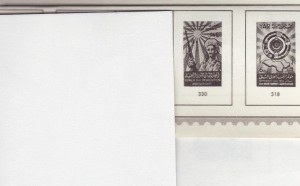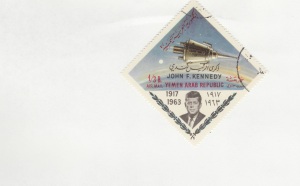Update: China’s Grand Project, The Economist August 5, 2017 p. 49-50.
In 2013, Zhengzhou, a business and logistics center in Central China, became the starting point for rail transport service to Hamburg, Germany and other European ports. The trip is a 6,436 mile (10,214-kilometer) run taking 15 to 18 days — twice as fast as shipping goods by sea.
China manufactures products for the world. We all know that. And it imports tons of materials and mineral resources. Trade connections between China and the major markets of Europe and North America are essential for global economic prosperity.
No one can overlook the importance of railroad infrastructure and the challenges of distance in historical economic advancement. If a country can’t get its goods to a robust marketplace with money, the economy doesn’t grow. Ship, truck and airplane transport are all part of the modern trade and transport equation, but rail is often the cheapest way to ship goods overland.
China was slow to build its rail system, but it is now third largest in the world. During the past few decades, China has made lightening strides to improve its rail networks for passengers and freight. Some analysts believe the extensive new rail infrastructure may have been built too fast, given the problems along the Beijing to Tibet line.
The Mag-Lev rail connecter from Shanghai airport to the city’s terrific subway is a marvel, priced for tourists from the western hemisphere and wealthy Chinese. I also traveled on other Chinese railroads promoted as high speed, which were not.
Why Ship by Rail? Why Now?

Map: Smart Planet.com
Maritime routes from Central China to Northern Europe go through the Suez Canal, because despite global warming and climate change, shipping on a great circle route over the North Pole isn’t a viable option yet. According to the information graphic, the China to Northern Europe sea route is one of the heaviest travelled routes in the world. It also goes right through pirate zone near the Horn of Africa. The Suez Canal and eastern Mediterranean, last time I checked, have issues of potential instability.

Map: DB Schenker
This land route from China to Northern Europe saves potentially 80 % of the cost compared with air shipments, and it’s about $489 cheaper on average, compared with road transportation. DB Schenker manages the transportation and logistics.
Nicknamed the New Silk Road, the route goes through Kazakhstan, Russia, Belarus and Poland. Zhengzhou International Inland Port Development Co Ltd is responsible for cooperating with partner rail companies in each country.
Variables affecting international rail transport include:
1) Rail loading gauge — how much weight can be tolerated on given carriers and track.
2) Track gauge — the width between the tracks.
There is broad gauge, standard or international gauge and narrow gauge. Further complicated by an array of different widths for broad gauge.
Loading gauges, couplings, container markings, and much more are encoded by the International Union of Railways, an organization created in 1922 to standardize rail transport industry practices. There are 82 active members including from Europe, Russia, China, Kazakhstan and others. The U.S. is an associate member.
With a route that travels through five or more countries, there are challenges along the route. The railroad containers have to be shifted by crane twice:
- From Chinese rolling stock to the Russian style broad gauge line at the Kazakhstan-China border at Alashankou, in northeastern China’s Xinjiang Uygur autonomous region.
- Second transfer to standard gauge at the Polish-Belarusian border.
US Customers
Hewlett Packard was an early customer of the new rail connection. They booked the route for a major shipment of H-P computers manufactured in China destined to ship from Holland across the Atlantic Ocean to the US.
Here is a video of train route that the H-P computers traveled to Rotterdam, including crane transfer of containers from one railway track to a different gauge rail track.
I’m looking forward to the day passenger trains run the route!




















